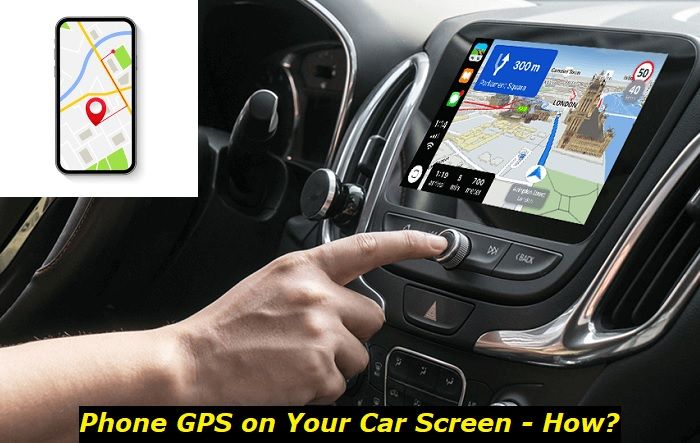When the "Check Charging System" warning on the dashboard of your Ford F150 is something that you should take seriously and not put off for long. Although sometimes, it may be gone the next time you restart your vehicle, a recurring alert of this nature should be addressed as it may later cause power issues in your auto.
Check charging system message highlights
- Common reasons:alternator problems, dying battery, wiring issues, voltage regulator faulty
- How to fix:check the battery, check the alternator, confirm the wiring is OK
- Possible consequences:car may not start eventually
- Priority level:High
- Can you drive?Yes
- DIY repair:Possible
- Repair price range:$150-$800

There are a few possible causes of this problem. However, the direct culprits are usually the following:
1. Drained Battery
The "Check Charging System" warning on a Ford F150 is typically triggered when the battery of the vehicle has been drained to an insufficient level. This can be caused by several factors, such as leaving the headlights or other electrical components in an 'on' state for long periods of time, allowing parasitic draw from aftermarket electronics/accessories, or simply due to a faulty alternator not providing enough charge.
When this occurs, the car may become difficult to start and may stall shortly after beginning. In some cases, the engine will turn over but will not start and there may also be clicks coming from under the hood when trying to start it.
To assess whether the battery can still be charged or if it is no longer capable of holding a charge, a multimeter set to 15 to 20 volts can be used to measure the voltage while the engine is running. If the battery is completely dead, it will show a reading of 5 volts or below.
On the other hand, if the battery is still in working condition and able to hold a charge, it should register over 10 volts. Once it has been determined that the battery can no longer hold a charge, then it needs to be replaced with a new one.
If it can still be charged, then you may still do so, but it won't be a guarantee that it won't get discharged again later on.
Sometimes this may need to be done in combination with replacing an alternator or other electrical components such as wiring harnesses and fuses. It is also important to check all related components for any additional issues before reinstalling the new battery.
Ultimately, once all systems have been checked and verified as functioning correctly after the replacement of the battery, then the "Check Charging System" warning can be assumed to have been resolved.
When replacing a battery, it is important to ensure that it is of suitable size and type for the specific make and model of the vehicle being worked on. It is also important to properly disconnect both terminals of the existing battery before performing any additional repairs as this will protect against short-circuiting or other potential electrical problems.
If in doubt about any aspect of the replacement process, it is best to seek professional assistance from a qualified mechanic. This will avoid any further damage or unnecessary costs due to incorrect installation.
Furthermore, if an aftermarket alarm system has been installed in the vehicle, then its wiring should also be checked for proper connection and functionality before reattaching the new battery. This will ensure that all related components and wiring are properly connected and functional and will guarantee a smooth-running vehicle with no further issues once the battery is replaced.
2. Weak Alternator
When the "Check Charging System" warning appears in a Ford F150, it is usually caused by a weak alternator. To assess the quality of the alternator, start by looking for symptoms such as dim headlights or flickering interior lights. If these are present, then use a voltmeter to check the battery voltage when the engine is running and parked (key off).
A healthy alternator should produce around 13.5-14.5 volts when running and 12.4-12.9 volts when parked. Anything lower than the mentioned values could be an indication of a weak alternator.
Another sign that can help determine whether or not an alternator needs to be replaced is a visual inspection. Look for corrosion or any signs of damage in both the alternator and the connection. If either of these is present, then it is likely time for a new alternator.
Replacing an alternator on a Ford F150 may require replacing the entire unit, including the alternator pulley, alternator bracket, positive battery cable, and negative battery cable depending on the severity of the problem. Also, depending on the vehicle year/model some additional components may need to be replaced.
It is important to refer to your vehicle's repair manual before attempting any work yourself. Otherwise, you may end up damaging other parts in the system or missing connections which can lead to larger problems down the line.
A technician should be the one to inspect all wiring and connectors for any frays or breaks before installing a new alternator. If there are any issues with these, then they should be resolved before the new alternator is put in place.
If the "Check Charging System" warning continues to appear after replacing all parts, it may be due to a faulty battery or an issue with wiring or connectors that needs to be further inspected. A technician should inspect any additional components and connections for proper operation as well. Taking all of these precautions can help ensure that the Ford F150's charging system operates properly and safely in the long run.
3. Failing Drive Belt
The drive belt in a Ford F150 is responsible for connecting the alternator, water pump, and other engine components to the crankshaft. When it begins to fail or wear out, this can cause the "Check Charging System" warning light to turn on.
To assess whether the drive belt needs replacement, one should first check its tension using a belt tension tester. If the tension is too low, then it needs to be replaced immediately. Another sign of a failing drive belt is visible cracks or fraying along its surface.
Replacing a worn-out drive belt is not complicated and does not require special tools or skills. The most important parts that need replacement are the alternator pulley and the serpentine belt.
The alternator pulley helps keep tension on the belt and can become worn out over time, while the serpentine belt is responsible for transferring power from the crankshaft to the other engine components. It is recommended to use original manufacturer parts whenever possible for a quality replacement job.
It is also important to inspect other related parts such as the drive belt's tensioner, pulleys, and brackets before replacing the drive belt. If any of these components are found to be in poor condition or damaged, they should be replaced at the same time as well.
Additionally, one should check that all mounting bolts are properly tightened after installation to ensure a secure fit. Finally, it is essential to use a torque wrench when tightening hardware to avoid over-tightening. By following these steps, one can effectively replace a worn-out drive belt in a Ford F150 and eliminate the "Check Charging System" warning light.
4. Corroded or Damaged Wiring
Assessing the quality of wiring in Ford F150s is essential for determining whether or not it needs replacement. Visual inspection is one way to assess the condition of the wires. Damaged ones will appear burned, corroded, brittle, or have visible wear and tear.
Using a multimeter on each wire connection can help pinpoint signs of corrosion as it will indicate whether or not electricity is properly flowing through. If either of these methods reveals that the wiring needs replacing, the most likely culprit for a "Check Charging System" warning message is a faulty alternator.
Replacing or repairing the alternator is typically necessary to resolve this issue. Depending on the age and model of the Ford F150, it may be necessary to replace the alternator itself or just its internal components such as a voltage regulator, rectifier, and even battery cables as mentioned earlier.
In some cases, a bad connection between the battery and alternator can also cause this warning message to appear, so it's important to check these connections as well.
In addition, it may be necessary to replace the wiring harness that connects the alternator and battery. The wiring harness is prone to wear and tear over time and if it's damaged, it will likely lead to electrical problems such as this "Check Charging System" warning message.
If the connections or individual wires appear corroded or otherwise worn, it may be time to replace the harness and restore the proper flow of electricity from the battery to the alternator and beyond.
For best results, Ford F150 owners should follow their manufacturer's instructions for repairing or replacing any parts related to this issue. It is also important to regularly inspect wiring connections and components for signs of corrosion or damage, as this can help prevent electrical problems before they occur.
If any damaged parts are found, it is important to replace them immediately to ensure the continued health of your vehicle's charging system.
If you are uncertain about exactly which parts need to be replaced or repaired, it is recommended that you consult a qualified technician or mechanic who can diagnose the problem and help make the necessary repairs. Doing so will ensure that your Ford F150's charging system remains in peak condition and any issues are addressed quickly and correctly.
5. Faulty ECU
Lastly, a malfunctioning ECU due to possible software glitches or hardware issues is one thing that could activate the warning. If the problem is indeed traced on the ECU alone and with no other possible issues with the charging system of the Ford F150, this can be fixed via reflashing or updating its system within the manufacturer's recommended settings.
However, if the hardware itself is showing signs of damage like cracks or burns from shorting, it should be replaced immediately.
Conclusion
No matter what the cause of the "Check Charging System" warning on your Ford F150 is, its immediate resolution is a must. Otherwise, you might find yourself stranded in the middle of your trip from complete parts failure later on.
About the authors
The CarAraC research team is composed of seasoned auto mechanics and automotive industry professionals, including individuals with advanced degrees and certifications in their field. Our team members boast prestigious credentials, reflecting their extensive knowledge and skills. These qualifications include: IMI: Institute of the Motor Industry, ASE-Certified Master Automobile Technicians; Coventry University, Graduate of MA in Automotive Journalism; Politecnico di Torino, Italy, MS Automotive Engineering; Ss. Cyril and Methodius University in Skopje, Mechanical University in Skopje; TOC Automotive College; DHA Suffa University, Department of Mechanical Engineering






Add comment